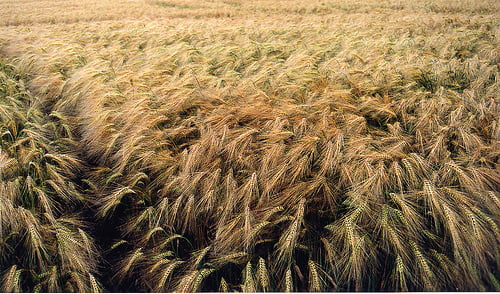A genetic mutation in wild barley growing in the Judean Desert – discovered by an international team from Haifa University in Israel – has shown how the transition of aquatic to land plants created life on the terra firma as we know it today.
The work by Guoxiong Chen, a Chinese doctoral student working under the supervision of Prof. Eviatar Nevo of Haifa University’s Institute of Evolution in 2000, made the chance discovery.
The doctoral student’s finding of the genetic mutation led to an international study, of which Nevo is a member, deciphering evolution of life on land.
After some eight years of research, the team discovered a new gene that contributes to the production of cutin, which is found in all land plants but is either nonexistent or present in tiny amounts in aquatic plants. Chen called this new gene Eibi1, in honor of his supervisor, Nevo, who is nicknamed Eibi.
“This is one of the genes that contributed to the actual eventuality of life on land as we know it today. It is a key element in the adaptation process that aquatic plants underwent in order to live on land,” Nevo said.
Chen found a mutation of wild barley that was significantly smaller than regular wild barley. It was found that this mutation causes an abnormal increase in water loss because of a disruption in the production of the plant’s cutin, which is secreted from the epidermal cells and is a component in the plant’s cuticle; this reduces water loss and prevents the plant from dehydrating.
To read the full article, click here.
Via www.jpost.com
Photo by crabchick
Related posts

Resilient And Nutritious New Plant-Based Milk Aims To Make A Splash

Chocolate From Cultivated Cocoa Comes Without Environmental Toll

Plastic Fantastic: Startup Takes PVC Back To Its Crude Oil Roots




Facebook comments